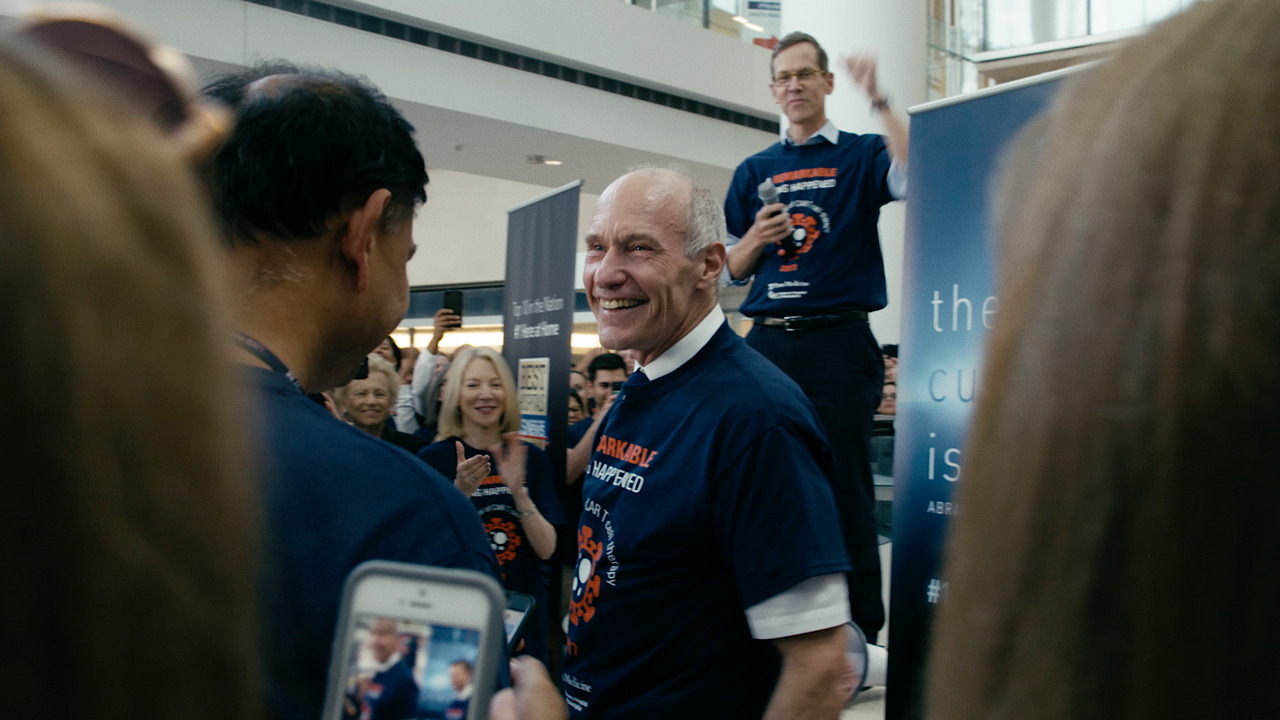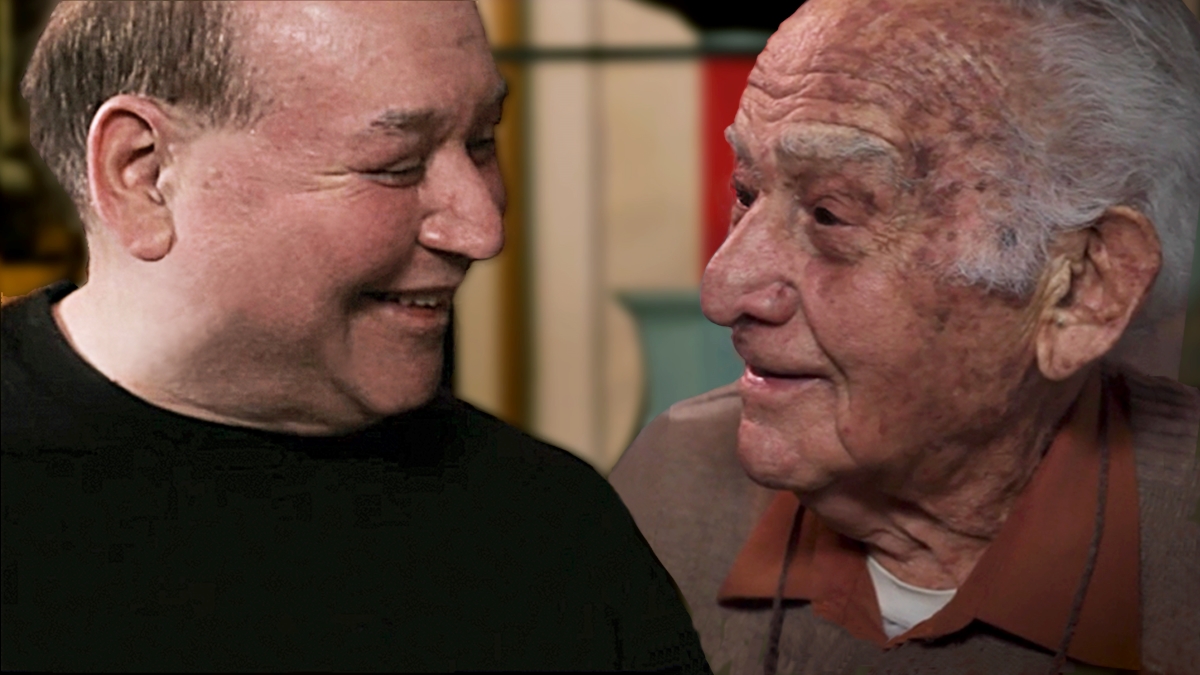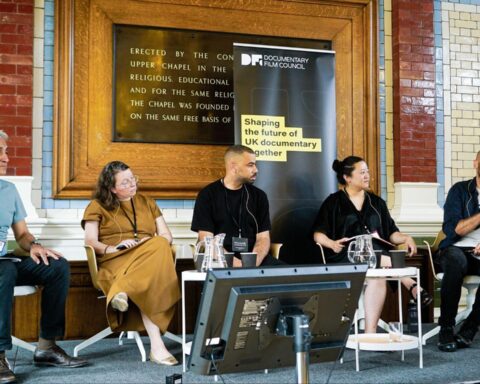Jennifer Lopez: Halftime
(USA, 95 min.)
Dir. Amanda Micheli
Jennifer Lopez gets the bum rap as a dramatic actress. Jennifer Lopez: Halftime partly focuses on Lopez’s career-best work in Hustlers, the gruelling awards campaign that surrounded it, and the controversial Oscar snub that marked its finale. However, Lopez’s omission the morning of the nominations wasn’t a surprise to anyone watching her film career closely. Her tale is one of constantly defying expectations even though she’s one of the most proven talents on the planet. From her breakthrough turn in Selena to her hypnotic screen chemistry with George Clooney in Out of Sight, she quickly showed her worth as a performer. Say what you will of her gravity-defying turn in Hustlers, but Halftime suggests that Lopez’s greatest performance was holding strong.
This energetic Netflix doc gives a snapshot in an unlikely milestone year. Halftime chronicles Lopez’s electric 2020 performance of the Super Bowl Halftime show alongside her campaign with Hustlers and her role as a mother. She juggles multiple full-time jobs and rarely complains. And all this action happens on the heels of her 50th birthday. In an industry that’s brutally unforgiving for women, particularly women of colour, and particularly particularly tough for women over 40, the year of Peak J-Lo Excellence is not the result of pure luck. Halftime is an honest look at what it means to hustle.
Half the Time
Halftime admittedly doesn’t break the mould of Netflix’s non-fiction slate that straddles a fine line between documentary and PR. Gigli, for example, gets mere seconds of airtime despite being a notorious bomb. However, this production isn’t all manicured J-Lo. Director Amanda Micheli captures many unfiltered views. For example, the call to host the halftime show is obviously bittersweet. On one hand, Lopez seems truly honoured to be tapped for one of the biggest platforms in entertainment. She beams while explaining that the NFL wants to spotlight a Latina performer to help unite a divided America. However, Lopez also calls the decision to accept the gig the worst idea ever. That’s because the NFL wants her to share the moment with Shakira. The backhanded compliment says one Latina artist can’t fulfill the demands of a white performer.
The film adopts tropes of backstage documentaries as it observes the making of the halftime show. Lopez and Shakira put on their best faces and navigate an even split of the 13-minute performance. That’s only fair, but it reduces their hit songs to mere seconds if they want to encapsulate their range as artists. The stakes are arguably much higher for J-Lo than they were for the likes of Lady Gaga or Coldplay. She has to prove herself in half the time.
Moreover, the halftime show summons Lopez’s inner rabble. She admits in interviews with Micheli that she doesn’t see herself as political. Her biggest hits are about love and partying. Getting the Super Bowl platform as a Latina icon, however, awakens her responsibility as a headliner in Trump’s America. She recalls feeling shaken at the sight of Latinx kids in cages on TV and wants the appropriate image to invigorate her show. The NFL, unsurprisingly, disagrees.
Finds Heart in Hustlers
The behind-the-scenes elements of Halftime illustrate Lopez’s stamina and commanding presence as a performer. There are takes upon takes of Lopez and her dancers perfecting the timing and movements needed to wow the world in six minutes. While these scenes offer impressive access, they often feel lacking.
Here’s where the story with the Hustlers’ campaign comes into play. The film is Lopez’s struggle in a nutshell. Playing the stripper Ramona, Lopez’s intensely physical performance is an electrifying ownership of female sexuality. She commands space and demands attention. Anyone searching for a definition of the “x factor” needs to see Hustlers. But through the way Lopez carries Ramona with confident swagger, she tells all about the character’s hard knocks. It’s a brilliantly lived-in performance, and the coup is that Lopez’s role as a producer helped get Hustlers made, launched on the world stage at the Toronto International Film Festival, and taken to over $100 million at the box office with accolades to boot.
The heart of Halftime, really, is the awards circuit grind. Lopez clearly revels in the admiration she receives for her performance. She’s most vulnerable when reading reviews. Halftime contextualizes the self-doubt that Lopez drilled into herself since childhood, as her parents insisted that one of her sisters was “the singer” and the other was “the smart one.” She was the beauty and the dancer. Even in her adult life, her career’s been overshadowed by what’s “behind” her. There’s a great clip of Billy Bush asking Lopez about her booty instead of her career. She replies with a deadpan challenge to the propriety of the question. His response is equally serious. Hustlers therefore embodies all Lopez knows about society’s failure to recognize her worth, and Halftime explores how she met the challenge.
Stuck in One Spotlight
Halftime finds a dramatic turn when Lopez loses the Golden Globe to eventual Oscar winner Laura Dern, which many prognosticators saw as an important bellwether in the race. The film’s access to Lopez’s entourage watching excitedly in the room, and then deflating when Dern’s name is announced, is a fascinating insider’s view of the sheer volume of effort that goes into scoring an Oscar nomination, and the collective disappointment over being shafted.
Micheli doesn’t quite seem to know what she has with this rare, if unfocused, glimpse of the icon. Halftime situates Lopez’s Oscar snub within the recurring #OscarsSoWhite narrative and challenge that performers of colour have to be recognized. This charge is obviously true of the Academy’s recurring shortcomings, and it volleys nicely off the Super Bowl thread, but it doesn’t quite capture the larger charge behind Lopez’s snub. The Academy’s reluctance to embrace Lopez’s performance in Hustlers, moreover, likely echoes the star’s own reflections about the preconceived notion people have of her. She’s a dancer, a singer, and a booty in the establishment’s eyes, even though she acted before releasing an album. Lopez rightly suggests that voters felt threatened by the image of such a strong and sexually charged character on screen.
Halftime therefore struggles to look beyond Lopez’s biography to make a large claim about stardom and the machinery at play. As a portrait of one performer, though, it’s an intimate and engaging snapshot of a star. The brave face Lopez puts on for the halftime show, and the hell of a performance she gives on the stage, however, should leave little doubt about her acting chops.











